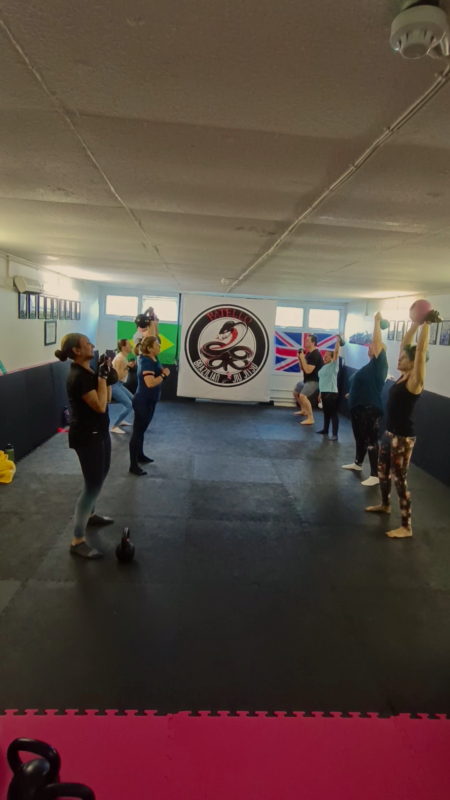Let’s talk about a topic that’s very important as we age – maintaining strong and healthy bones. You know the usual advice about getting enough calcium and vitamin D. But did you know that incorporating the right kind of exercise, like kettlebell training, can be a total game-changer for your skeletal strength and independence?
The Startling Truth About Women’s Bone Health
I’ve got to be brutally honest – the statistics on osteoporosis and fractures for women are pretty scary. According to the International Osteoporosis Foundation, one in three of us over 50 will suffer a debilitating fracture in the hip, spine or wrist. That’s massive!
These fractures aren’t just painful inconveniences either. They can make you lose mobility, independence and even increase your risk of an early departure from this world. Harsh reality – a woman’s lifetime odds of a hip fracture actually equal her combined risk for breast, uterine and ovarian cancer. Terrifying, right?
To make things worse, our skeletons start losing density rapidly once we hit menopause thanks to those unpredictable hormone shifts. So staying proactive about building and maintaining bone strength is absolutely crucial as we age.
The Power of Resistance Training for Bone Health
Now for some great news: researchers have definitively proven that regular resistance training can help prevent osteoporosis and reduce fracture risk in a big way. You see, weightlifting-style exercises create forces that signal your bones to keep regenerating and building new tissue.
Numerous studies show that consistent strength training leads to higher bone mineral density and prevents age-related bone loss, especially for postmenopausal women. One breakthrough trial found that a year of resistance workouts increased spinal and hip bone density by a whopping 8-10% compared to non-exercisers. That’s huge!
While any resistance work provides skeletal benefits, I’m about to blow your mind with one particularly powerful tool…
Why Kettlebells Reign Supreme for Bone Strength
If you’re not yet familiar with the kettlebell, grab a seat – this unique cast iron weight with a handle is going to rock your world. These super-functional weights allow for dynamic, full-body movements like swings, cleans and overhead presses that seriously challenge your muscles from every angle.
Here’s where it gets really cool – research shows the intense, explosive nature of kettlebell exercises generates high-impact forces that tell your bones to keep building new cells. It’s sort of like giving your skeletal system a “wake-up call” to keep getting stronger and denser.
On top of that, the gripping and stabilising required to control those heavy kettlebells while they’re in motion works wonders for strengthening your forearms, wrists and shoulders – the very areas most prone to debilitating fractures from osteoporosis.
Best of all, kettlebell training provides an incredibly efficient full-body burn while improving your mobility, cardio capacity and functional strength for everyday life. You can get so many benefits with one epic workout!

Live Stronger, Live Longer
Here’s what really gets me fired up about kettlebell training: it gives you way more than just denser bones and reduced fracture risk. The full-body strength, coordination and explosive power you’ll build makes you feel incredibly grounded, agile and confident in your movement with each workout.
Our members constantly tell us how much more capable and sturdy they feel in their bodies. That seamless combination of skeletal strength and muscular force helps them carry groceries more easily, climb stairs without worry and remain active in their lives with loved ones for years to come.
Young adults, new moms, active agers – women of all backgrounds and life stages can benefit tremendously from tapping into kettlebells’ bone-preserving and functional benefits. And the best part? It’s never too late to improve your health and overall vitality through this fun, efficient training style.
We have members in their 60s and 70s achieving remarkable bone density improvements and mobility gains after dedicated kettlebell work. For us, seeing that freedom, strength and youthful energy get reignited in them is very inspiring.
What we do at The London Kettlebell Club
Our club is a pioneering gym that specialises in harnessing the bone-building powers of the kettlebell through fun and empowering kettlebell classes.
Part of our mission is to provide women of all ages with an inclusive community focused on maintaining skeletal strength and active longevity through kettlebell training. We created the club to show our neighbourhood and community how incredibly effective and inspiring these workouts can be.
We provide a friendly and welcoming atmosphere where you’ll master fundamental kettlebell moves with an emphasis on perfect form. We believe in an integrated approach that builds strong foundations while continuously challenging your body in new ways. Our sessions are designed to provide the ideal bone-building stimulus while you’re training smarter, not just harder.
If you’re looking for more individual attention, we also offer private kettlebell personal training to dial in personalised programming for your unique bone health goals.

Reclaim Your Power, One Swing at a Time
The facts are clear: osteoporosis and fracture risks shouldn’t be taken lightly as strong and capable women. But please don’t let those statistics weigh you down! Through kettlebell training and complementary lifestyle strategies, you can take control of your bone health and keep getting stronger, more resilient and full of energy for decades to come.
References:
- International Osteoporosis Foundation. Facts and Statistics. (https://www.osteoporosis.foundation/facts-statistics)
- Cummings SR, Melton LJ. Epidemiology and outcomes of osteoporotic fractures. Lancet. 2002;359(9319):1761-1767. (https://www.thelancet.com/journals/lancet/article/PIIS0140-6736(02)08657-9/abstract)
- Shojaa M, Nahidiazar L, Omidnia A, et al. Effect of Exercise Training on Bone Mineral Density in Post-Menopausal Women: A Systematic Review. J Family Med Prim Care. 2020;9(1):27-32. (https://www.ncbi.nlm.nih.gov/pmc/articles/PMC7325605/)
